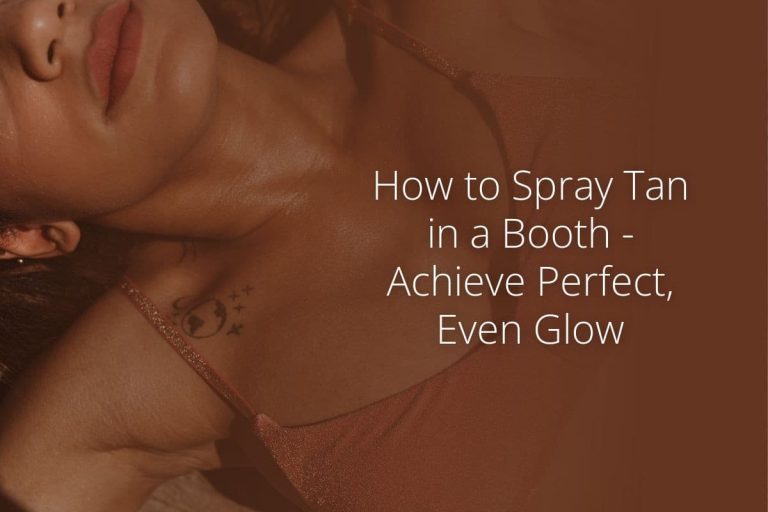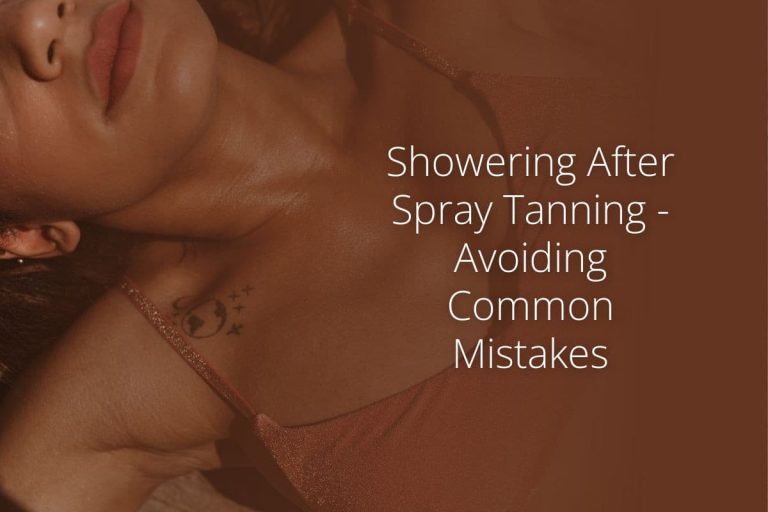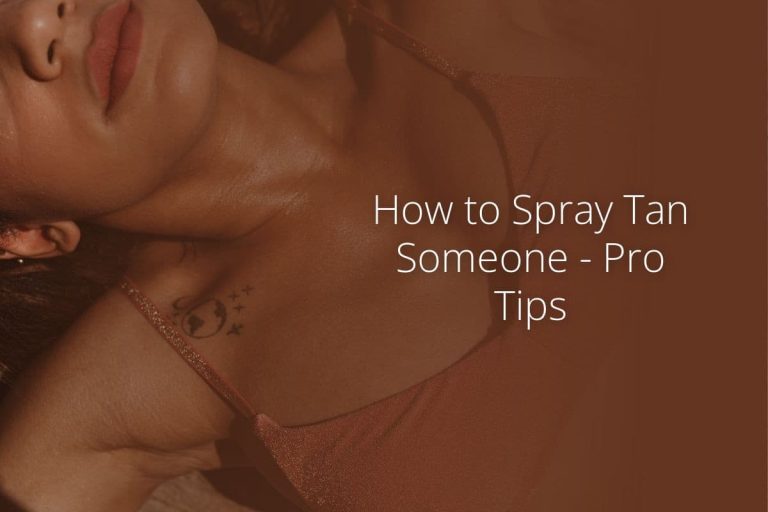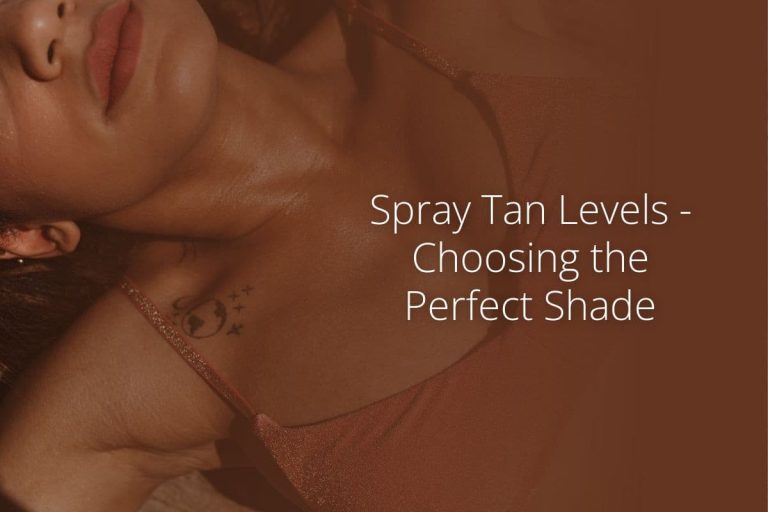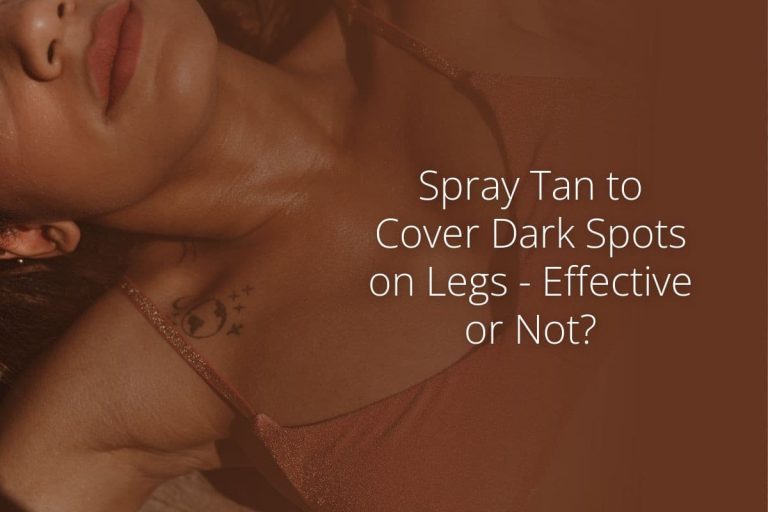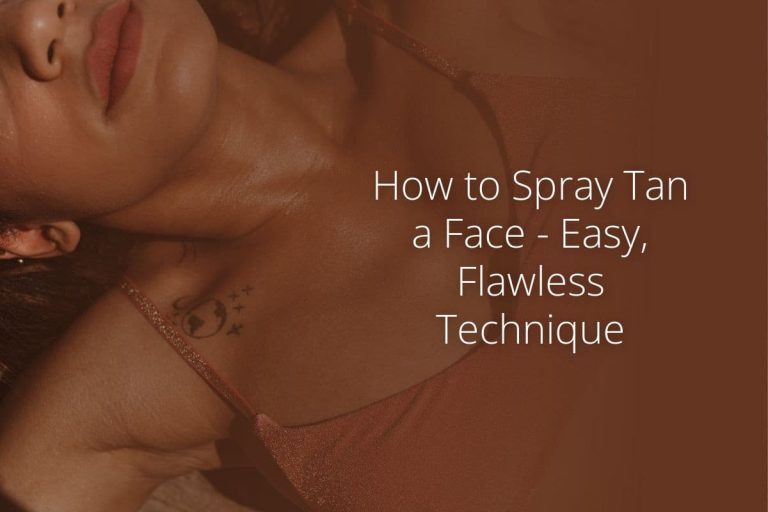
A tan can give your skin that sun-kissed glow which many people find appealing, and there are several ways to achieve this. Two common methods are through a tanning bed or a spray tan. But as with anything that involves your skin, it’s crucial to weigh the pros and cons of each method. So, is a tanning bed better than a spray tan, or is it the other way around?
When comparing a spray tan to a tanning bed, the spray tan is generally considered the safer option. The primary reason for this is that tanning beds expose your skin to ultraviolet (UV) radiation, which can lead to skin damage and increase the risk of skin cancer. On the other hand, spray tans work by applying a solution that interacts with the upper layer of your skin to create a tan-like effect. This method doesn’t involve UV exposure, making it a safer alternative.
While spray tans are generally safer, there are still factors to consider such as the longevity of the tan, the evenness of application, possible allergic reactions, and more. Not to mention, there’s also the importance of aftercare for both methods to maintain that beautiful glow. So, if you’re interested in learning more about these two popular tanning methods, read on further!
Understanding the Differences: Spray Tan vs Tanning Bed
Spray Tan:
- The application process involves misting a tanning solution onto the skin, which is then exposed to UV light.
- Ingredients in spray tan solutions typically include DHA, a colorless sugar that reacts with amino acids on the skin’s surface to produce a temporary tan under the influence of UV light.
- Provides an instant spray tanning that develops fully within a few light hours.
- Offers a range of spray tanning shade options, allowing individuals to achieve their desired level of darkness.
- Can be applied professionally or at home using self-tanning sprays or lotions.
Tanning Bed:
- Spray tanning involves exposure to UV radiation emitted by special lamps inside the spray tanning bed.
- Ultraviolet (UV) rays stimulate melanocytes to produce melanin, resulting in a spray tan.
- Spray tanning requires multiple sessions over several weeks to build up and maintain a tan.
- Excessive use of tanning beds can increase the risk of skin damage and potentially lead to skin cancer.
- Some people find tanning beds more convenient due to their ability to provide an all-over tan without manual application.
Distinct Features:
- Application Process:
- Spray Tan: Mist tanning solution onto the skin for an instant tan.
- Tanning Bed: Expose the body to UV radiation from lamps inside the bed.
- Ingredients:
- Spray Tan: Contains DHA that reacts with amino acids on the skin’s surface for temporary color change.
- Tanning Bed: Stimulates melanocytes through exposure to UV rays.
- Timeframe:
- Spray Tan: Develops fully within hours after application.
- Tanning Bed: Requires multiple sessions over weeks for gradual tanning.
- Risks:
- Spray Tan: Minimal risks associated with topical application of tanning solution.
- Tanning Bed: Increased risk of skin damage and potential development of skin cancer due to UV exposure.
Understanding these differences will help you make an informed decision about whether to opt for a spray tan or use a tanning bed. Consider your preferences, convenience, and the potential risks involved before choosing the spray tanning method that suits you best.
Health and Safety Considerations: Which Option is Safer?
Spray tan and tanning beds both offer a golden glow, butIt’s important to consider the potential risks associated with each option. Let’s evaluate the safety factors involved in spray tanning, so you can make an informed decision based on your own priorities and risk tolerance.
Risks of Spray Tan
- Allergic reactions: Spray tans use DHA (dihydroxyacetone) to darken the skin. While generally safe, some individuals may experience allergic reactions or skin irritations from spray tanning.
- Inhalation concerns: When getting a spray tan, there is a chance of inhaling the mist containing DHA. Although rare, spray tanning may cause respiratory issues for sensitive individuals.
Safety Concerns with Tanning Beds
- UV radiation exposure: Tanning beds emit UV rays that can damage the skin and increase the risk of skin cancer. Prolonged exposure to spray tanning can also lead to premature aging and other skin-related problems caused by these rays.
Considering Your Health Priorities
It’s crucial to prioritize your health. Here are some points to keep in mind:
- Safe alternative: If you’re concerned about UV radiation exposure, spray tan provides a safer alternative as it doesn’t involve direct exposure to harmful rays.
- Faster results: Spray tans typically offer quicker results compared to building up a tan in tanning beds.
- Risk assessment: Assess your personal risk tolerance when deciding between spray tan and tanning beds. Consider factors such as family history of skin cancer, any existing skin conditions, and the use of spray tanning.
Ultimately, the choice between spray tan and tanning bed boils down to what you value most – convenience or minimizing potential health risks. By understanding these considerations about spray tanning, you’ll be better equipped to make an informed decision that aligns with your well-being.
Remember, always consult with a healthcare professional or dermatologist if you have specific concerns about your skin health, including spray tanning.
Occasion-Specific Choices: Choosing the Best Option for Your Wedding Day
Your wedding day is a momentous occasion, and you want to look your absolute best.You have two great options to consider: spray tan or tanning bed. Let’s explore which spray tanning option might be the best fit for your special day.
- Consider how spray tan can provide a natural-looking glow for your special day: Spray tans have come a long way in recent years, offering a more natural and even application. With the right products and skilled application at a reputable salon, you can achieve a beautiful sun-kissed look without any telltale signs of orange streaks or uneven patches. Plus, spray tans can be customized to match your desired shade perfectly.
- Explore whether using a tanning bed before your wedding might be more convenient: If convenience is at the top of your mind, then scheduling regular appointments at a tanning salon with their beds could be an option worth considering. Tanning beds offer controlled exposure to UV rays, allowing you to gradually build up color over multiple sessions. Just remember to take proper care of your skin and follow recommended guidelines for safe tanning bed use.
- Decide which option aligns better with your desired bridal look: Ultimately, choosing between spray tan and tanning bed depends on the specific look you envision for yourself on your wedding day. Here are some factors to keep in mind:
- Clothing: Consider the style and color of your wedding dress as certain shades may complement better with either option.
- Time: Think about how much time you have before the big day. Spray tans typically last around a week while building up color through tanning bed sessions may require several weeks.
- Skin sensitivity: If you have sensitive skin or are prone to breakouts, spray tan might be gentler on your skin compared to tanning bed exposure.
- Desired shade: If you’re looking for a more subtle glow, spray tan allows for better control over the desired shade.
In the end, it’s essential to weigh your options and choose what aligns best with your preferences and desired bridal look. Whether you opt for a spray tan or use a tanning bed, remember that confidence is the most beautiful accessory you can wear on your wedding day.
Pros and Cons: Weighing the Benefits and Drawbacks of Spray Tan and Tanning Bed
Advantages of Spray Tan
- Instant results: Spray tan offers the benefit of providing immediate color to your skin without the need for sun exposure.
- Convenient application: With spray tan, you can easily achieve an even tan by simply spraying the solution onto your body.
Drawbacks of Spray Tan
- Potential streaking: One drawback of spray tans is that they may result in streaks or uneven coloration if not applied properly.
- Limited duration: The effects of a spray tan typically last for about a week before gradually fading away.
Benefits of Tanning Beds
- Vitamin D production: Tanning beds can stimulate vitamin D production in the body, which is essential for maintaining healthy bones and immune function.
- Quick sessions: Using a tanning bed allows you to achieve a desired tan in just a few short sessions.
Risks of Tanning Beds
- Overexposure concerns: Prolonged use or overexposure to tanning beds can increase the risk of skin damage, premature aging, and even skin cancer.
- Uneven tanning potential: Depending on your body’s position while using a tanning bed, there is a possibility of uneven tanning due to certain areas receiving more exposure than others.
Longevity and Results: Comparing the Duration and Effectiveness of Both Methods
How long does a spray tan last? How many tanning bed sessions do you need for desired results? These are crucial questions to consider when deciding between a spray tan or a tanning bed. Let’s dive into the effects, benefits, and maintenance levels associated with each method.
- Determine how long a spray tan typically lasts before it starts fading: Spray tans offer a temporary bronzed glow that gradually fades over time. On average, they can last anywhere from 5 to 10 days before requiring touch-ups or reapplication. However, factors such as skin type, aftercare routine, and the quality of the spray tan solution used can influence its longevity.
- Assess how many sessions in a tanning bed are needed to achieve desired results: Tanning beds provide quicker results compared to spray tans but require multiple sessions for optimal outcomes. The number of sessions needed varies depending on individual preferences, skin tone, and desired level of tan. It is essential to start with shorter durations (around 5-7 minutes) initially and gradually increase exposure time to avoid premature aging and minimize the risk of skin diseases.
- Make an informed decision based on your desired level of maintenance: Consider your lifestyle and commitment to maintenance when choosing between spray tans and tanning beds. Spray tans require less frequent visits but may necessitate additional attention to ensure an even fade-out process. On the other hand, tanning beds demand regular visits for consistent color but involve minimal aftercare.
To summarize, both methods have their advantages and considerations:
Spray Tan:
- Lasts around 5 to 10 days
- Requires touch-ups or reapplication
- Fade-out process requires attention
- Offers temporary bronzed glow
Tanning Bed:
- Provides quicker results
- Multiple sessions needed for optimal outcomes
- Gradually increase exposure time
- Involves minimal aftercare
Ultimately, the choice between a spray tan and a tanning bed depends on your desired level of maintenance, time commitment, and preference for longevity. Consider these factors to make an informed decision that aligns with your goals.
Making an Informed Decision on Spray Tan or Tanning Bed
Now that you have a better understanding of the differences between spray tan and tanning bed, considered the health and safety aspects, explored occasion-specific choices, weighed the pros and cons, and compared the longevity and results of both methods, it’s time to make an informed decision. Ultimately, the choice between spray tan and tanning bed depends on your personal preferences, desired outcome, and individual circumstances.
If you’re looking for a quick and convenient way to achieve a sun-kissed glow without harmful UV exposure, spray tan may be your best bet. On the other hand, if you enjoy the relaxation of lying in a tanning bed or want more control over your tan’s intensity, then a tanning bed might be more suitable for you. Whatever option you choose, always prioritize your health and safety by following recommended guidelines.
FAQs about Spray Tan vs Tanning Bed
Can I get an even tan with a spray tan?
Yes! With proper application techniques and preparation (such as exfoliating beforehand), you can achieve a natural-looking even tan with a spray tan. Make sure to follow the instructions provided by your technician or product manufacturer for best results.
Will I look orange after using a tanning bed?
While some people may experience an orange tint from using a tanning bed due to improper use or excessive exposure, it is possible to avoid this outcome. Start with shorter sessions and gradually increase your time in the tanning bed to develop a natural-looking tan.
How long does a spray tan typically last?
The longevity of a spray tan varies depending on factors such as skin type, aftercare routine, and product quality. Generally, it can last anywhere from 5-10 days. Proper moisturizing and avoiding activities that cause excessive sweating or rubbing against the skin can help prolong its duration.
Are there any risks associated with using a tanning bed?
Yes, there are risks associated with using a tanning bed. Overexposure to UV radiation can increase the risk of skin cancer, premature aging, and other skin damage. It is crucial to follow safety guidelines, limit your sessions, and protect your eyes and skin during tanning bed use.
Can I get a spray tan if I have sensitive skin?
If you have sensitive skin, it’s important to test the spray tan product on a small patch of skin first to check for any adverse reactions. Consult with a professional or dermatologist who can recommend suitable products for your specific needs.

